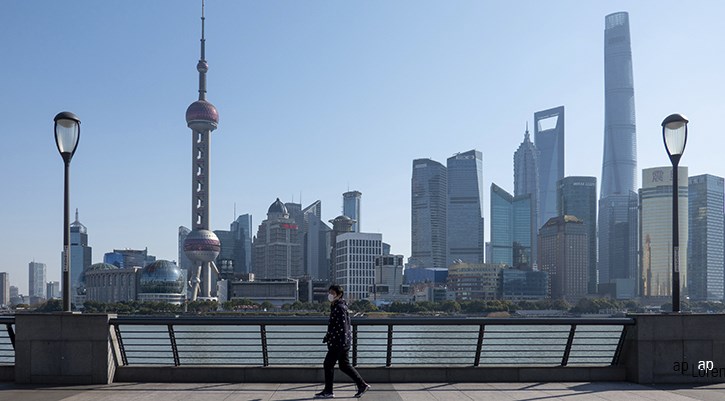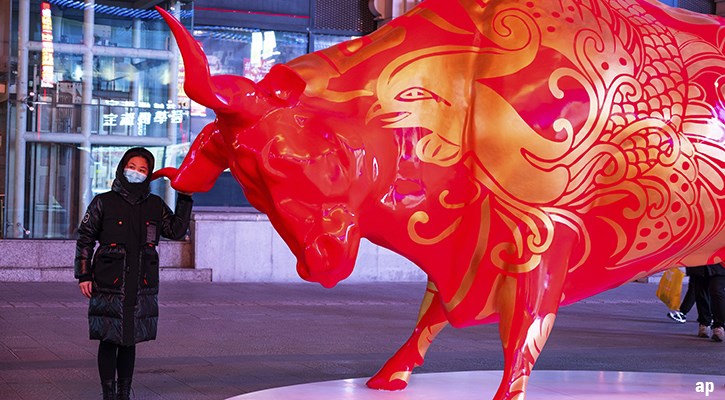
Editor's note: Read the latest on how the coronavirus is rattling the markets and what you can do to navigate it.
The US-China trade war and COVID-19 pandemic are forcing global companies to diversify their manufacturing away from China to other emerging and frontier markets. This pivot became particularly urgent since the outbreak of COVID-19 wreaked havoc on China-based supply chains, exposing the world’s overdependence on China. The supply shock has hit corporate revenues hard due to lost output, sparking fears of a recession.
There are other factors - steadily growing cost of labour, technology theft and the protectionist policies of the Chinese government, to name a few – that are compelling foreign companies to shuffle manufacturing away from the world’s second-largest economy.
These factors coalesced to prompt companies like Apple and Amazon to deepen their manufacturing bases in India. Apple has been ramping up iPhone production in India, including the flagship iPhone X family.
Neighboring Asian countries are also moving quickly to capitalise on the trend. Some have managed to lure Google and Microsoft away from China. Their governments have responded with cutting red tape, setting up special economic zones, and making their markets more attractive with fewer regulations for foreign companies.
Will the pandemic exacerbate the exodus?
The answer depends on who you ask. Some observers say while the pandemic highlighted the world’s overdependence on China, the event will only have a limited impact on the shift. The virus is global, even if it originated in China, and is less of a factor in pivot away from the Asian economic giant, says Adam Kutas, a portfolio manager at Fidelity Investments.
“The bigger drivers have been Chinese operating costs and better infrastructure in countries like Vietnam, Cambodia and Bangladesh,” he says, pointing to China’s own industrial restructuring in which the country is increasingly focusing on higher-wage and skilled production, while moving away from light, low-skilled manufacturing.
Alfred Lee, portfolio manager and investment strategist at BMO Global Asset Management, says the pandemic will certainly expedite some production to move out of China. “One lesson that many countries learned in the recent weeks is that you don’t want to be overly dependent on other countries as it could cause some supply chain disruptions,” he says.
New manufacturing map, new opportunities
Opportunistic investors should be paying attention to the new links in the global supply chain. China’s loss is some smaller economies’ gain. As companies pull production out of China, key frontier markets including “Vietnam, Cambodia, Myanmar, Philippines, and Bangladesh should benefit from this long duration secular tailwind,” says Kutas.
As factories shift to these markets, they create higher paying jobs for local consumers, who most likely rely on farming. “Consumer staples and retailers should do well as people move from shopping in the wet markets to formal retail shops and buy that packaged milk instead of milk powder,” notes Kutas.
The new map of the global manufacturing makes a renewed case for emerging markets. “Emerging-markets stocks rank among the world’s riskiest, but they also have greater potential to be mispriced,” says Morningstar research analyst, Daniel Sotiroff, in an analyst note. The disconnect between intrinsic value and market price creates opportunities for active managers to deliver better performance than a market-cap-weighted index fund, adds Sotiroff.
Investors could also tap into this shift through mutual funds that own shares in “many of such companies [that] have production contracts with big brands like Nike, Adidas, and Lululemon, but have shifted their factories to Vietnam, Cambodia, Indonesia and India,” notes Kutas.
Investors should also keep a close eye on sectors such as robots, airplanes and semiconductors, where the Chinese are starting to compete aggressively. “Once the Chinese are established, their lower costs and relationships with most of the emerging world could make it very difficult for the U.S., Canadian, and European companies,” cautions Kutas, adding “we have seen this trend over the past 20 years in areas like cranes, cars, solar panels, phones, etc.”
Follow the money
Global FDI is a decent measure as it captures both government spending and private capital. “The data indicates that capital continues to flow to three key winners: Vietnam, Cambodia, Bangladesh, and to a lesser extent, Philippines, Myanmar and Indonesia,” says Kutas.
India, Pakistan and Ethiopia are also part of the conversation, but it’s the shipping lanes that hold the key. “Vietnam is the best positioned simply because it’s on the same shipping routes as China to the U.S.,” he says, referring to it as “a long-term structural tailwind.”
No rewards without risks
Emerging-markets strategies that try to take advantage of mispricings, or new opportunities, in these markets will have their share of inherent risks.
“China, Russia, and India impose foreign ownership restrictions on some, or all, of their publicly traded companies,” says Morningstar’s Sotiroff, adding “some segments of these markets may only be available to a select group of foreign investors.”
Apart from restrictions, emerging-markets indexes possess some risks that are unique to stocks from these regions. “A number of companies listed in countries like China, Russia, and India are partially owned by their government, which may not always act in the best interest of shareholders,” Sotiroff warns.
Further, as production moves to new markets, companies will be more exposed to the ebb and flow of the local economies. “That would mean revenues over the economic cycle may be more volatile,” Lee contends.
A plus for Canada
While no countries are immune form a trade war, Canada could potentially benefit as a large exporter to the U.S. “Tariffs placed on China could make Canadian exports more attractive, allowing Canada to gain more market share,” says Lee.
He cautions, though, that the lowering of reliance on China could intensify isolationist strategies. “As countries potentially move away from globalization to become less reliant on others, this will also support the recent trend towards focusing on specific countries,” Lee argues.
There is another unintended consequence to consider. Diversifying manufacturing bases could mean larger inventories and increased margin pressure for global companies. “A key lesson from COVID-19 and trade wars for any CEO is that they can’t run anymore super lean inventories, [which introduces] just too much risk of borders being shut,” says Kutas.




















